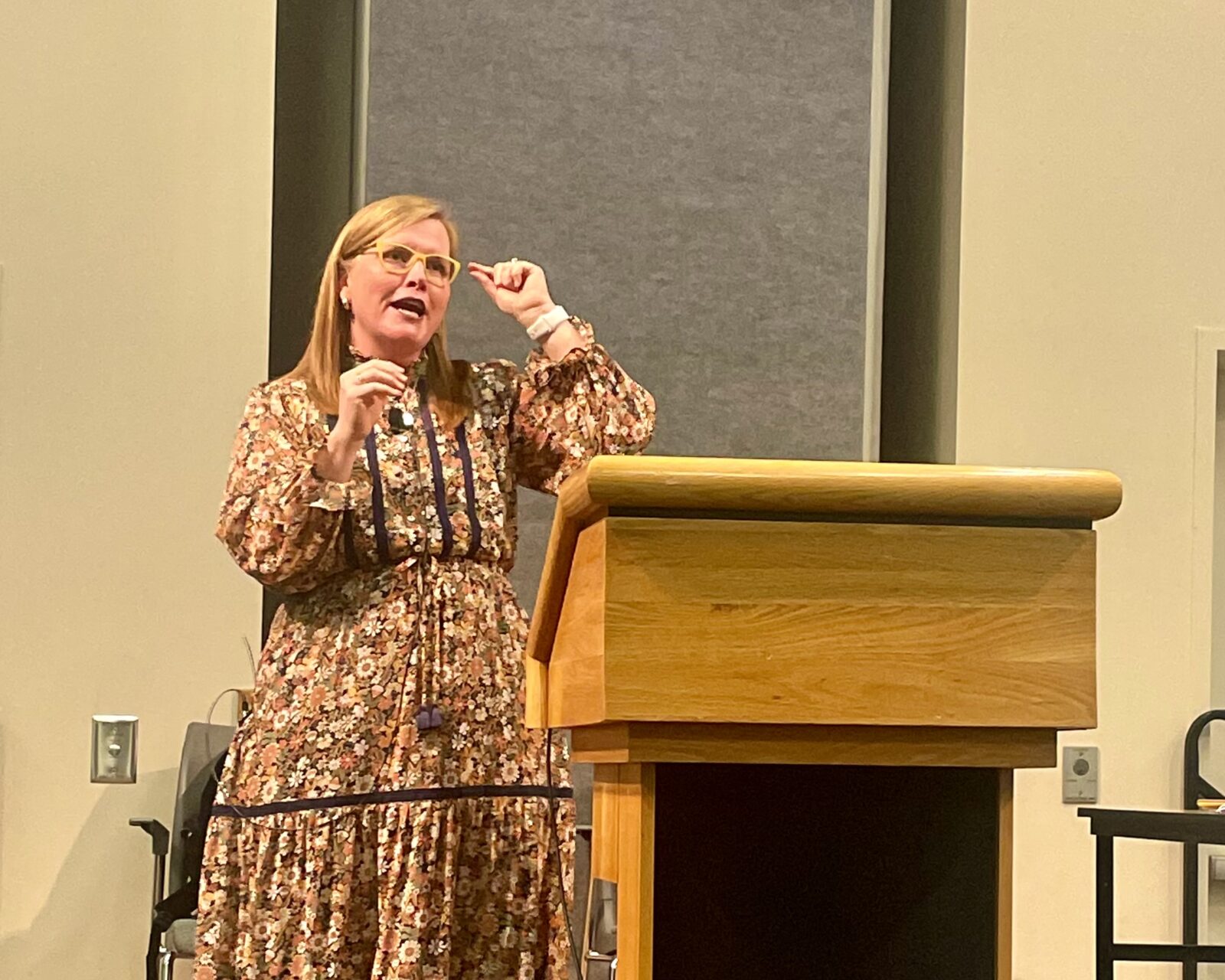
Editor’s note: Education Week coverage can be found in this section of the website.
Katie E. Steed, the disability specialist manager for The Church of Jesus Christ of Latter-day Saints, taught a class on supporting Church members with disabilities as part of BYU’s Education Week on Aug. 15th.
Steed’s address was focused on informing Education Week attendees on the progress the Church has made providing accommodations for members with disabilities so they have full access to gospel resources.
Steed began her lecture by stating that this continues to be an essential area of concern for the Church and that there is still much progress left to be done.
She said the concept of “fairness” is a popular topic when discussing accessibility for those who need special assistance. Steed explained the importance of noting the difference between equality, accommodation and accessibility. She added that in her experience as an associate clinical professor at BYU, she found many students believe fairness to be a synonym for “the same” or “equal.”
“‘Fairness’ is everybody gets what they need,” Steed countered. This has been the goal for providing accessibility for members with disabilities.
The Church’s website has a section specifically for members with disabilities, as well as parents or leaders who want to learn more about lending support.
Steed explained that her goal is “not to be the voice for the people, but to elevate their voices.” The Church has listened to concerns from individuals with disabilities and caretakers of those individuals to create a variety of accessible formats for scriptures and other Church materials including audio, ASL, web braille and more.
Steed gave an example of one instance of difficulty that some members who are blind felt when listening to the Church’s video titled The Christ Child.
The video was originally made in Aramaic, which made it impossible for these members to understand what was happening in the video. They reported feeling “unimportant and unseen” when listening.
The Church heard members’ concerns and added an audio description feature to the video. After this addition, members shared that this change made them feel more heard and valued by the Church.
Steed also detailed how the Gospel Library app has several settings that users can change to make the app easier for them to navigate, including changing the size of the text and changing theme colors to help those with dyslexia.

Steed gave another example about mothers of children who are nonverbal and their concerns. The mothers felt able to teach their children math or English with icons and images but found it difficult to do the same with gospel principles.
In response to this, the Church is now making about 700 nonverbal gospel language symbols. These images also focus on inclusivity, consisting of family members with hearing aids, amputated limbs and more. These will be available on the Church’s website.
“A lot of this has been very researched and we will continue to test it,” Steed said.
Steed said she feels passionate about this subject because she has been involved in this professional field for many years, but also because she has a son with autism.
“I do everything in my power to teach my children the gospel,” Steed said. “I keep trying and advocating for people to understand the needs that all of my children have.”
Steed ended by encouraging the audience to “be the Savior’s hands” to help their fellow Church members with disabilities.
“I can’t be the Savior’s hands for the worldwide Church,” Steed said. “It needs to be handled at a ward and member level.”




